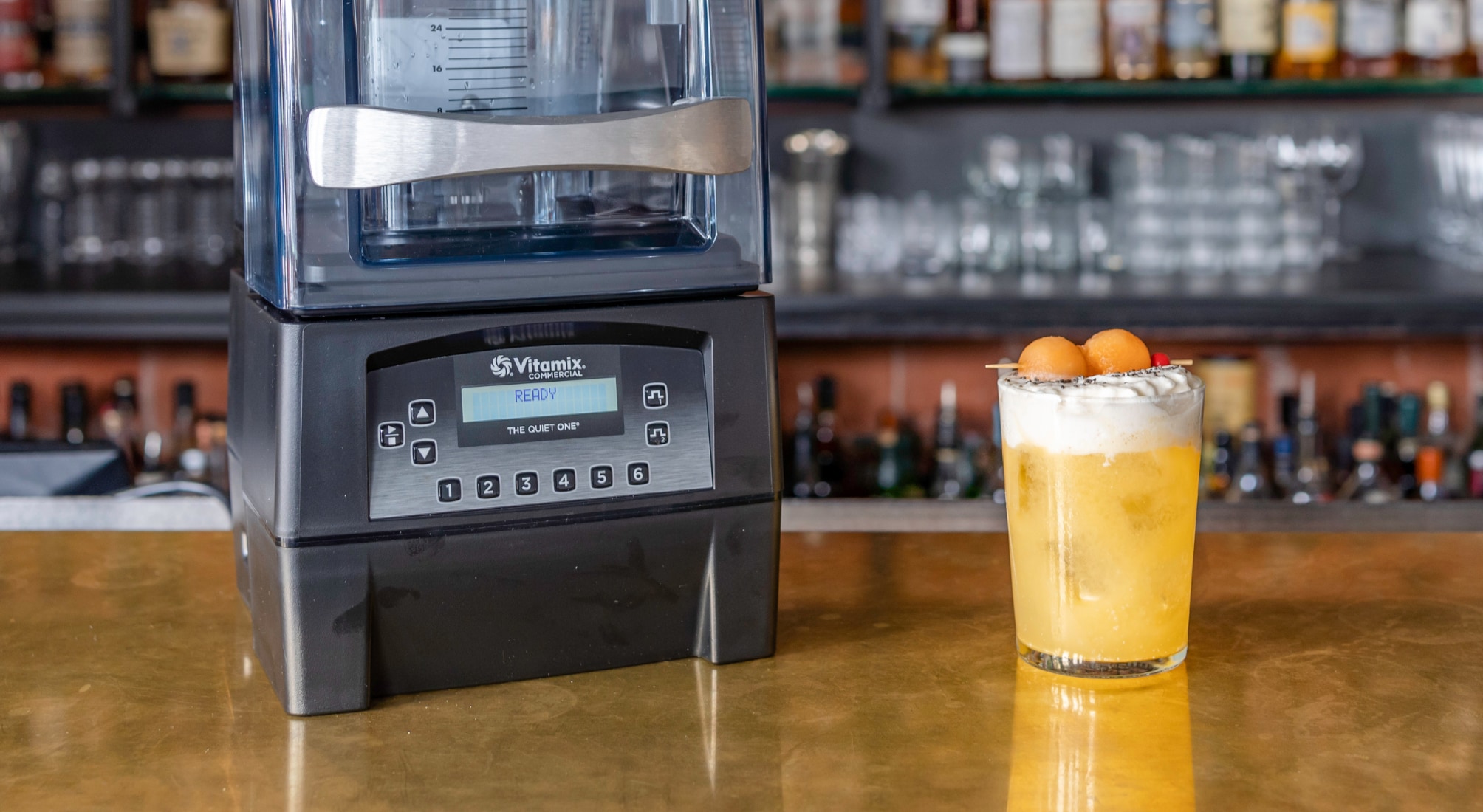There are many ways to elevate a mixed drink to craft status – from top-shelf liquors and local ingredients to the ice and garnish – but the one that stands above the rest is artistic invention, the beverage with something a little different, a novelty component, new to the palate, with no off-the-shelf option.
These novel components take time, and every bartender knows you cannot hold up customers with long preparations, yet it’s possible to make these special components ahead of time in batches.
In the field of bartending, “batching” is a term that covers a lot of ground, referring to a whole range of possible preparations. In our case, by batching, we have in mind a process that produces a unique element of the cocktail that is saved for a short time and often refrigerated in a nonreactive container.
When the cocktail is actually mixed for the customer, the special component is measured out along with many other ingredients. In most cases, the process for making these unique components is such that it’s just as easy to make large quantities of them, as it would be to make less.
Batching of this kind is something that occurs in the off-hours when it’s possible to take some time for exploration and experimentation.
We reached out to several bartenders and mixologists asking them for unique cocktail and mocktail recipes with special elements that can be made ahead of time in large batches. Three types of processes turned up in these recipes: (1) flavored syrups and infusions, (2) fruit purées, and (3) coffee and tea blends.
Flavored Syrups and Infusions
Infusions and flavored syrups are two methods of introducing fruity or herbal notes into your cocktail – and both invite experimentation.
For his Hibiscus Holiday cocktail, Bobby Heugel in Houston, Texas, creates a raspberry cinnamon syrup by blending raspberries, lemon juice, and sugar in The Quiet One® by Vitamix® Commercial; then adds cinnamon sticks and boils the mixture over medium heat for 10 minutes.

Channing Centeno in New York City creates a toasted coconut syrup for his Frozen Thai Tea Espresso. He roasts 6 quarts of coconut flakes, places them in boiling water, and lets them steep for 23 minutes; then strains the mixture through a chinois and whisks in sugar; then transfers the liquid to a Vitamix and blends until smooth, before straining one last time.
Infusions are similar to syrups but are often herbal. Shawn Lickliter in Los Angeles capitalizes on the mysterious flavors of shiso for his Watermelon Cocktail. Shawn blanches the shiso in boiling water for 30 seconds, blends it in a Vitamix with the gin for about 1 minute, then strains it through a coffee filter or cheesecloth.
Natasha David in New York City introduces a basil infusion as a twist on a watermelon mocktail called Slid N’ Slide. She creates the basil syrup by blanching fresh basil sprigs in boiling water for 30 seconds, then transfers them to an ice bath. Natasha picks the leaves from the stem and places the stems in a Vitamix with a simple syrup, blends for 1 minute, then strains the mixture.
Fruit Purées
Fruit purées call to mind flavors like strawberry and watermelon, but there is lots of room for offbeat or creative approaches with other fruits. Bobby Heugel creates a cantaloupe purée by blending the cantaloupe in chunks with the seeds and inner core. Then, he strains the blend through a metal conical strainer.
For his Cantaloupe de Lupe cocktail, Bobby combines the cantaloupe purée with blanco tequila and lemojn juice and tops it with a decadent cantaloupe cream made with cantaloupe juice, heavy cream and orgeat syrup. He makes the cantaloupe cream ahead of time also, charging it in a whipped cream dispenser.

Coffee and Tea Blends
As cold coffee and tea blends become more common in cocktails, batching allows for a range of creative approaches with authentic and culturally interesting brews.
To complete his Frozen Thai Tea Espresso Martini (with the toasted coconut syrup), Channing Centeno brews 9 quarts of Thai tea, adding the Thai tea directly to the boiling water and brewing for 23 minutes, before straining it through two, stacked chinois.
Shawn Lickliter recently created a frozen blend made with cold-brew coffee (batched in advance) mixed with rum, coffee liqueur, sugar, pineapple, and lime. The tropical creation is a frozen take on a popular cocktail served at Bali Hai Restaurant in San Diego, California.
Many mixologists are also experimenting with coffee-infused spirits, a relatively easy process. Take 750 milliliters of bourbon or vodka and add 1 cup of whole-bean coffee, letting it sit for up to two days before straining it. If used in simpler recipes, then the flavor of the infused spirits will come forward.
Coconut is another flavor that goes well with coffee cocktails. For his TCMT Frappe, Shawn batches not only the cold-brew coffee and Thai tea, but also a coconut cream made with three parts cream of coconut and one part coconut milk. He dresses up this mocktail by serving it in a Collins glass, topped with whipped cream and nutmeg.
For those interested in the Hong Kong coffee-milk-tea combination, Shawn suggests experimenting with other types of teas, such as Sakura blossom tea or a green tea.
The Magic Touch
While bartending is partly performance art, an act of creation before the customer’s eyes, this magic is partly dependent on what happens beforehand. If you can find a little off time to experiment with special components that can be batched and stored for a few days, then your powers of creation will be greatly enhanced during your festive evening hours of bartending.
For more information, email the Vitamix Commercial team at letstalkcommercial@vitamix.com. The content for this article, including the recipes from the bartenders and mixologists, was developed in partnership with StarChefs.

